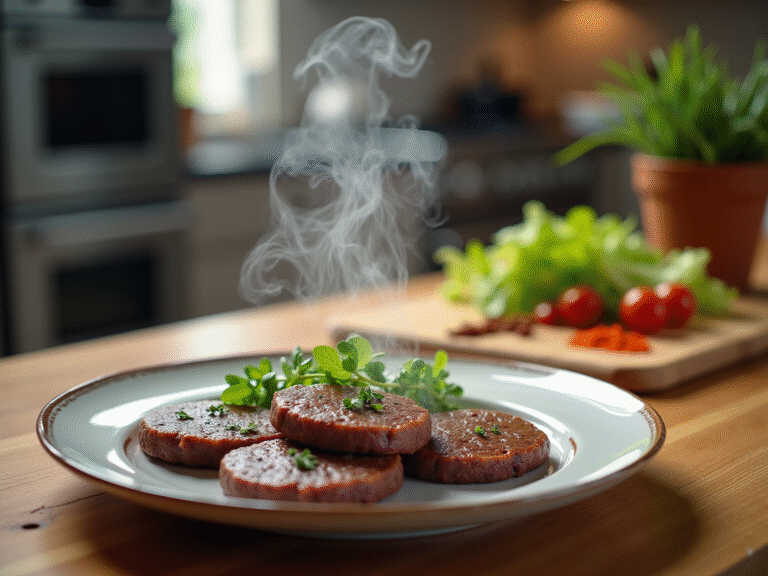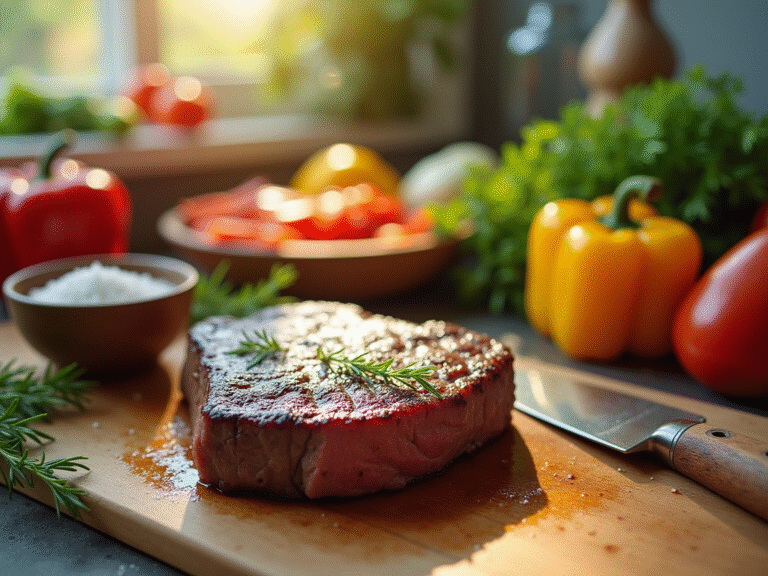Master the Macadamia Protein Bar: Essential Steps and Tips
Overview
This article outlines essential steps and tips for mastering the preparation of macadamia protein bars. It emphasizes the importance of gathering key ingredients and following a detailed recipe. To support this, the article provides a comprehensive list of ingredients and step-by-step instructions. Furthermore, it addresses common issues that may arise during preparation and highlights the health benefits of these nutritious bars, ensuring that readers can successfully create their own at home.
Introduction
In the quest for healthier snacking options, homemade protein bars have emerged as a popular choice for those looking to nourish their bodies without sacrificing taste. Among the various recipes available, macadamia protein bars stand out for their rich flavor and nutritious ingredients. This article will explore the essential components needed to create these delectable treats, providing a step-by-step guide to preparation, along with tips for troubleshooting common issues.
Are you seeking a post-workout boost or a satisfying snack? These bars promise to deliver both health benefits and culinary satisfaction. They are a must-try for anyone looking to enhance their snack game. By making your own protein bars, you can enjoy a delicious and nutritious option tailored to your taste preferences.
Gather Essential Ingredients and Tools
To create delicious macadamia protein bars, gather the following essential components and tools:
Components:
- 1 cup macadamia seeds: Rich in healthy fats and flavor, macadamia seeds form a nutritious base for your macadamia protein bars. They are also packed with flavonoids, antioxidants that may help reduce inflammation and protect against chronic diseases.
- 1/2 cup protein powder: Use a flavor that complements the seeds, such as vanilla or unflavored.
- 1/4 cup almond butter: This will bind the mixture.
- 1/4 cup honey or maple syrup: For natural sweetness.
- 1/2 cup rolled oats: Adds texture and fiber.
- A pinch of salt: To enhance the flavors.
- Optional add-ins: Dark chocolate chips, dried fruits, or seeds can further boost the nutritional benefits of your macadamia protein bar.
Follow Step-by-Step Instructions for Preparation
- Prepare the Baking Pan: Begin by lining an 8×8 inch baking pan with parchment paper, ensuring some overhang for easy removal later.
- Process the Seeds: In a food processor, add the macadamia seeds and pulse until finely chopped, retaining some texture for a satisfying bite.
- Mix Wet Ingredients: In a mixing bowl, combine almond butter, honey (or maple syrup), and a pinch of salt. Stir until the mixture is smooth and well blended.
- Combine Ingredients: Add the chopped macadamia nuts, macadamia protein bar, and rolled oats to the wet mixture. Stir thoroughly until all ingredients are evenly coated and combined.
- Press into Pan: Transfer the mixture to the prepared baking pan. Use a spatula or your hands to press it down firmly and evenly, ensuring a compact texture.
- Chill: Place the pan in the refrigerator for at least 1-2 hours to allow the treats to set properly.
- Cut into Bars: Once set, lift the mixture out of the pan using the parchment paper. Slice into pieces of your preferred size, remembering that smaller pieces are ideal for convenient snacking.
- Store: Keep the sticks in an airtight container in the refrigerator for up to a week, or freeze them for extended storage. This way, you’ll always have a healthy snack ready to enjoy.
Health Benefits: By preparing a macadamia protein bar at home, you are substituting ultra-processed treats with a healthier option, which can reduce the risk of type 2 diabetes. Additionally, making a big batch of these bars can be more affordable than buying them individually or by the box, providing both health and economic benefits.
Expert Insight: As Katey Davidson, MScFN, RD, CPT, notes, “Protein powder can be part of a healthy diet, but you might wonder whether too much can be bad for you.” This recipe enables you to manage the quantity of nutrients you incorporate, ensuring it aligns with your dietary requirements.
Community Inspiration: Numerous users have contributed their distinctive energy bar recipes, including diverse components such as peanut butter and coconut, which can improve flavor and texture. Feel free to try various components to discover your ideal mix!
Troubleshoot Common Issues and FAQs
Troubleshoot Common Issues and FAQs:
- Bars are too crumbly: A frequent issue with protein bars is crumbliness, often due to a dry mixture. To remedy this, incorporate a tablespoon of almond butter or honey, which will help bind the ingredients together effectively. Furthermore, it’s significant to mention that the cutting resistance of high-protein snacks made from pea isolate is 27.44 N, suggesting that texture consistency is essential for a satisfying product.
- Bars are too sticky: If your mixture turns out overly sticky, it may contain excess moisture. Incorporating additional supplement or oats can absorb this moisture and enhance the texture. Simon M. Loveday observes that chemical alterations during the hardening of nutrition squares are minimal, indicating that moisture movement plays an important role in texture, which emphasizes the necessity to regulate moisture levels carefully.
- Not holding shape: Properly pressing the mixture into the pan is crucial. If the pieces still disintegrate after pressing, consider increasing the quantity of almond butter to improve binding. Understanding that texture inconsistencies are a common problem in homemade snack recipes can help you troubleshoot effectively.
- Common snack bar issues: According to recent studies, the most prevalent problems in homemade snack recipes include texture inconsistencies and binding failures. Understanding these issues can help in troubleshooting and improving your recipes. Studies also show that consumers have unique preferences concerning protein sources and sensory characteristics in snacks, which can inform your recipe modifications.
- Expert advice on binding components: Nutritionists suggest utilizing a mix of wet and dry elements to attain the desired consistency. Components such as nut spreads and syrups not only contribute taste but also improve the binding characteristics of the snacks. This aligns with findings that suggest a balanced approach to ingredient selection is key to the success of a macadamia protein bar. Yes, you can substitute macadamia nuts with almonds or cashews to create different flavors and textures, catering to personal preferences.
- How can I make these treats vegan? To make vegan protein bars, replace honey with maple syrup and opt for a plant-based protein powder, ensuring all ingredients align with vegan standards.
- Can I add chocolate? Absolutely! Incorporating dark chocolate chips can enhance flavor, but be mindful of the additional sugar content to maintain a healthy balance.
Conclusion
Creating homemade macadamia protein bars not only offers a delicious snacking option but also empowers individuals to take control of their dietary choices. By utilizing wholesome ingredients like macadamia nuts, protein powder, and natural sweeteners, these bars provide a nutritious alternative to store-bought snacks, which are often laden with preservatives and added sugars.
The step-by-step preparation guide simplifies the process, making it accessible for anyone looking to enhance their snacking habits. With the ability to customize flavors and textures, these protein bars can be tailored to suit personal preferences, encouraging creativity in the kitchen. Troubleshooting tips further ensure that even novice cooks can achieve satisfying results, reinforcing the notion that healthy eating can be both enjoyable and achievable.
Ultimately, embracing the making of homemade protein bars fosters a deeper connection to food and nutrition. With each bite of these macadamia protein bars, the benefits of healthy eating become evident, supporting not only fitness goals but also a more mindful approach to snacking. Whether for post-workout recovery or as a mid-afternoon pick-me-up, these bars stand as a testament to the power of nutritious choices in everyday life.
Frequently Asked Questions
What are the essential components needed to create macadamia protein bars?
The essential components needed are 1 cup of macadamia seeds, 1/2 cup of protein powder, 1/4 cup of almond butter, 1/4 cup of honey or maple syrup, 1/2 cup of rolled oats, and a pinch of salt.
What benefits do macadamia seeds provide in the protein bars?
Macadamia seeds are rich in healthy fats and flavor, packed with flavonoids, and antioxidants that may help reduce inflammation and protect against chronic diseases.
Can I customize my macadamia protein bars with additional ingredients?
Yes, you can customize your bars with optional add-ins such as dark chocolate chips, dried fruits, or seeds to further boost their nutritional benefits.
Why is protein powder included in the recipe?
Protein powder is included to enhance the protein content of the bars and should be chosen in a flavor that complements the macadamia seeds, such as vanilla or unflavored.
What role does almond butter play in the macadamia protein bars?
Almond butter serves as a binding agent in the mixture, helping to hold the ingredients together.
How does honey or maple syrup contribute to the protein bars?
Honey or maple syrup adds natural sweetness to the protein bars.






